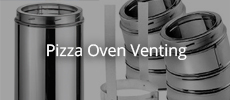Re: foam concrete
Blocks of foam concrete are being used in general construction here; taking the place of wall insulation and a small, soft red brick. I assume they are not quite as strong but they are certainly lightweight, cheap and make buildings cooler. I have no idea how they are manufactured here in Thailand - I just hope they ones I used last a long time. They can be replaced(in my oven) but it would be a pain. I fired my oven the first time, about a year ago and used it 2 times a week on average.
X
-
Leave a comment:
-
Re: foam concrete
I used the "air block" as insulation under the hearth of my oven - essentially the same as the "foamed concrete", I think. No problems so far; seems to hold heat and the blocks are set on edge, giving me 7 inches of insulation, with the hearth floating on top. I posted photos on this site.
Leave a comment:
-
Re: foam concrete
The chemical composition of the stuff is on post no. 14 on this thread.
Leave a comment:
-
Re: foam concrete
Gudday Rodger and DavidsOriginally posted by RogerQ View PostI salute you for building a foam generator! From some earlier reading, there was a problem in exporting organically based foaming agent to India; blood was used in the production. If I remember correctly, the inorganic agent was sodium lauryl sulphate.
As an alternative to clay slip, there are castable refractories available, and investment casting, (sort of a lost wax process). They are designed to gain strength from drying or curing, then even greater strength when they are fired.
Carry on! I'm back to your pdf's
roger
Blood and bone was the main component of the old style fire fighting foam. Its use has been taken over by AFFF which main component is of course sodium lauryl sulphate, Sodium lauryl sulphate is also found in most hair shampoes ( check the label out on yours). Sounds like making this foam cement might be lot more achievable by the home handyman than I first thought.
Regards Dave
Leave a comment:
-
Re: foam concrete
Using the foam in conjunction with castable refractory is on my to do list. Unfortunately there are way too many other things higher on the list.Originally posted by RogerQ View PostI salute you for building a foam generator! From some earlier reading, there was a problem in exporting organically based foaming agent to India; blood was used in the production. If I remember correctly, the inorganic agent was sodium lauryl sulphate.
As an alternative to clay slip, there are castable refractories available, and investment casting, (sort of a lost wax process). They are designed to gain strength from drying or curing, then even greater strength when they are fired.
Carry on! I'm back to your pdf's
roger
Leave a comment:
-
Re: foam concrete
I salute you for building a foam generator! From some earlier reading, there was a problem in exporting organically based foaming agent to India; blood was used in the production. If I remember correctly, the inorganic agent was sodium lauryl sulphate.
As an alternative to clay slip, there are castable refractories available, and investment casting, (sort of a lost wax process). They are designed to gain strength from drying or curing, then even greater strength when they are fired.
Carry on! I'm back to your pdf's
roger
Leave a comment:
-
Re: foam concrete
Originally posted by waikato pizza View Postso what do you use as a foaming agent? Dish washing liquid?
Leave a comment:
-
Re: foam concrete
so what do you use as a foaming agent? Dish washing liquid?
Leave a comment:
-
Re: foam concrete
Here are some photos of my homemade foam generator that I've been using successfully for a while now.The first shot shows the internal bit, the second one shows the position used when adding compressed air with the tap in open position. It takes about three minutes for the foam to start coming out the tap.The last shows the position I use when pushing the foam out. I use bike floor pump for this as it is a better controlled way of pushing out the foam. As you can see it produces 20 litres of foam from a charge of 20 ml concentrate and 2 litres of water (this needs to be calculated in the total water addition of the mix). You make up a slurry of cement, then add the foam to it either in a mixer or barrow. It is ridiculously simple.3 PhotosLast edited by david s; 12-11-2012, 01:57 PM.
Leave a comment:
-
Re: foam concrete
Yes, I use my homemade foam generator, it works fine, but you need the correct foaming agent which produces foam that does not deflate and is chemically compatable with the cement. Calcium silicate board is probably a superior solution, but it is expensive (for where I live at least)Originally posted by pfennigthecat View PostI'm new to a lot of the WFO stuff, but is this likely to be the method of choice for hearth insulation, pouring an insulated layer on the hearth rather than using ceramic boards or the like? is that the 'end goal' behind the experimentation?
I think I read correctly that it is a very liquid mix, so would you anticipate being able to use it anywhere else? Build a form around a completed dome and pour to embed the dome in a solid cube of foam concrete?
Lastly, are you using your home-made foamer for the tests still, but using the 'official' foaming liquid?
Thanks in advance! I'm just starting thinking about getting materials together right now, would definitely like to know if there is a better / cheaper option for insulation under the floor or over the dome.
Forget about using foamcrete over the dome, unless you have some sort of outer mould to contain it. It refuses (in my experience at least) to work up to a plastic mix. If you are doing an enclosure it is probably better to use loose dry perlite or vermiculite, although you could cast a solid cube of foamcrete, let it dry and stucco over the surface for strength.Come to think of it you could easily sculpt the foamcrete cube into whatever form you wanted.Last edited by david s; 12-01-2012, 04:31 PM.
Leave a comment:
-
Re: foam concrete
I'm new to a lot of the WFO stuff, but is this likely to be the method of choice for hearth insulation, pouring an insulated layer on the hearth rather than using ceramic boards or the like? is that the 'end goal' behind the experimentation?
I think I read correctly that it is a very liquid mix, so would you anticipate being able to use it anywhere else? Build a form around a completed dome and pour to embed the dome in a solid cube of foam concrete?
Lastly, are you using your home-made foamer for the tests still, but using the 'official' foaming liquid?
Thanks in advance! I'm just starting thinking about getting materials together right now, would definitely like to know if there is a better / cheaper option for insulation under the floor or over the dome.
Leave a comment:
-
Re: foam concrete
OK here are the results of my tests on this stuff. I am thoroughly convinced of the superiority of this material. I hope someone else will be keen enough to try it and verify my results.Attached Files
Leave a comment:
-
Re: foam concrete
I tested the absorption rate of the two samples and was surprised at the results. Each sample is 500 ml in volume and I placed 200 ml of water in a container, then placed the sample in it. The vermicrete sample had absorbed all of the water in 10 mins, while the same test with the foamcrete left 71ml of water (ie it had only absorbed 129 ml) in the same time. It proves that perlcrete takes up more water and at a faster rate and then takes longer to get rid of it. That's a big winner.Last edited by david s; 12-01-2012, 02:02 PM.
Leave a comment:






Leave a comment: